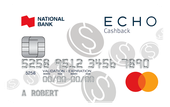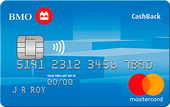With rewards that are easy to understand and can be used towards almost anything, cash back credit cards are among the most popular in Canadian households. When spending wisely, a cash back credit card can help you reduce your living costs, or save up for a big trip abroad.
This category of credit cards is valued for its simplicity. Instead of trying to figure out how to maximize travel rewards or where to transfer points, these credit cards give straightforward rewards every time they are used. Cash back rewards also have no expiry date. You can use them to lower your balance every month, or save them up towards a major purchase.
Are cash back credit cards right for your lifestyle? Can you get better rewards from a cash back credit card than an airline miles or points earning credit card? By understanding all the benefits that these cards can offer, you can get the biggest return on your spending. Finty can help you find the best cash back cards for your lifestyle.
How cash back credit cards work
As the name would suggest, cash back credit cards help you earn rebates on all your spending. For example: if a cash back rewards card offers 2% back everywhere, you will earn $0.02 for every $1 you spend with the card. But instead of getting a cheque in the mail, the cash back will be credited to your card account. From there, you can use it to pay off any (or all) of your credit card balance.
So if you use your credit card to buy $100 of groceries, and it offers 2% rewards on purchases, you would earn $2 cash back. Four similar trips to the grocery store every month would earn $8, able to be used on your credit card to offset your balance.
But if the credit card offers 5% cash back for groceries as a bonus category, that $100 would earn you $5 in cash back. Four monthly trips to the store, and you would earn $20 in rewards.
All credit cards offer different bonus categories and ways to pick up additional rewards for your spending. To get the best cash back, be sure to understand the bonus categories on each card, and compare them to your own spending pattern. By aligning the two, you are well on your way to maximizing your bonuses every year.
Many cash back credit cards offer a sign up bonus, which is typically an elevated percentage rate for a period of time after approval.
Monthly and annual cash back cap
While cash back rewards cards offer a lot of upside, there are limitations to your earnings. Some cards will come with a monthly cap on how much you can earn, and an annual cap on certain bonus categories.
Although a monthly cap may not sound like a problem, it can create issues for major spenders in specific categories. If a credit card offers 3% cash back on groceries and 1% cash back on recurring bills with a $500 monthly spending cap in each category, the maximum you can earn between both categories is $20. That's $15 from groceries and $5 from recurring bills. If you plan on spending more per month in each of these categories, you could gain more value from a card with a higher monthly cap.
Annual caps can also limit the amount of rewards you can earn through regular spending. For instance, a card may offer 5% cash back for spending on groceries, up to $6,000 every year – meaning you'll get 5% in rewards for the first $6,000 of groceries, and the default earning rate (usually 1%) for all purchases at the grocery store afterwards.
Doing the math, the maximum cash back you would earn with that bonus on groceries every year is $300. If you spend $12,000 in groceries every year, you would earn $360: $300 on the first $6,000, and $60 on the second $6,000. To maximize your rewards, be sure to align your spending with cards that offer high monthly and annual caps.
Cash back bonuses in spending categories
In addition to offering a steady stream of cash back when you spend, the best cash back credit cards usually offer bonus categories for certain kinds of spending. One might offer a rotating 5% cash back in different categories quarterly (like spending at restaurants), or have a year-long bonus when you spend at one shop. One card even offers you 2% cash back for purchases at Tim Horton's.
As an example: let's say a good credit card offers 3% cash back on eligible groceries, gas and recurring bills, and 1% on everything else. Every month, if you spend $500 on groceries, $175 on gas, and $325 in recurring bills, your total monthly rewards would come to $30 – $15 from groceries, $9.75 from bills and $5.25 from gas.
Another credit card offers 4% back on gas and groceries, 2% back at TELUS and 1% everywhere else. Again, if your monthly spend includes $500 on groceries, $175 in gas and $125 at TELUS, you would earn $$29.25 in rewards – $20 from groceries, $7 from gas and $2.50 from TELUS. The best cash back card is the first one, because you earn slightly more every month in the categories where you spend the most.
To get the best cash back from credit cards, be sure to understand all the bonus categories and how they work in your budget. By using one card with big rewards on groceries, and another with a bonus category for subscription services, you can be sure to earn the best rewards towards your goals.
Cash back vs points and air miles
While airline miles and flexible points earning credit cards can offer you rewards towards your travel ambitions, understanding the programs and how to get the most rewards can be difficult. Some airlines no longer publish how many miles you need for a free ticket, while flexible points cards require you to transfer them from one program to another, without giving you a complete view of your overall rewards.
The best cash back card advantage is in the simplicity. No matter where you spend, you are earning easy-to-use rewards that you can apply to your everyday lifestyle. There's no need to memorize award trends, or calculate how much you gain from moving points around. Simply use your favourite card on all your purchases, and watch your rewards grow. And instead of trying to redeem points for maximum value, you have full control of where your rewards get used, and how much to use on your purchase.

















